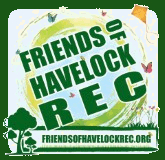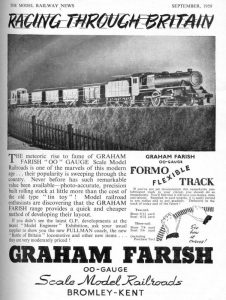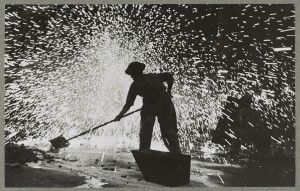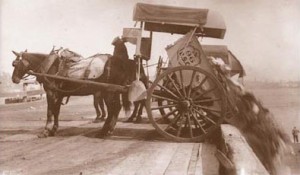Tag: local-history-by-residents
1948: “My Recollections of Raglan Road school 1948 to 1955
My recollections of Raglan Road school 1948 to 1955.
1940s: “Rubbish from derelict bomb sites … always steaming hot…”
“I have lived in this road since I was five years old, and I am now 81 years.
This park has beneath it rubbish from derelict bomb sites during the war. It was always steaming hot. Some parts of the Rec sink (because of this) so it was deemed unfit to build on – I don’t know if the powers that be still know about this – heaven help us if they built on this ground and it started to sink! I thought I should tell you the history of this land as there are not many of us left in the road to tell this story.
Before this [that it was a dump] my Grandad used to work in the Brick pit, building bricks, and this is why it was originally called Havelock Brickfields. It was a large hole until it was used as landfill of the wartime bombing rubbish.”
from a supporter’s email (2018).
1941: Local Oral History – Mrs T Coombes in 1989
Mrs T Coombes, daughter of J. Pepper (Headmaster of Raglan Road Junior School 1941-59 and previously master in Senior Boys) in Raglan School’s Centenary 1889-1989:
Something I shall always associate with wartime is seeding grass – it grew along every pavement and at the bottom of every fence This contributed to the general air of shabbiness in the streets. The houses mostly had peeling paint, gates leaned on their hinges or were propped open, and windows were obscured by sticky netting or replacement parchment, or were blacked out with old lino or impenetrable dark air raid curtains.
The disused brickfield behind Havelock Road, which was used as a tip for industrial and household rubbish, was an irresistible adventure playground. We called it the Brickie and would sometimes wander there at lunch break and scramble about through the rubbish via little pathways, having to take care to avoid the more unpleasant patches.
Local oral history – Mr Arthur Sheppeck
Mr Arthur Sheppeck
Some recollections from Arthur Sheppeck, who played in the brickfield, mainly from 1941 to 1949. He remembers the Brick Pit being 60 feet deep.
He told me, in 2015:
‘One day, one of the ARP wardens approached us boys. He told us “For God’s sake don’t do what I’m going to do” and he took an incendiary bomb he was carrying and lobbed it into the pit. It exploded with a blinding flash of white light, and the warden told us “that could have been you”. I can tell you, it fair put the wind up us…!’
Local oral history – Mr Daniel Bentley
Daniel Bentley writing as Chatterton Road History Society, in 1917:
“Tony, my friend, a retired butcher was telling me that during WW2, they used the pits to dump the debris from bombed houses, things like bricks, wood, house fittings etc.
After the war the area was grassed over and used as a football pitch. Problem was that even when things are buried, the lighter materials come to the surface, and this includes the broken glass from all the house windows, which resulted in some pretty horrific injuries. Imagine the consequences of a slide tackle over broken glass . . .”
1950s: “when he was a boy he used to cut across the brickfield…”
Reg from Bourne Road
One long-time local, Reg, from Bourne Road told me in 2017, that when he was a boy he used to cut across the brickfield and through all the piles of dumped rubbish, as his family lived in Cannon Road, and he attend Raglan Road school.
He and the other lads would look through the rubbish discarded from the little model railway factory, (which was where Excel house now stands by the railway, on the corner between Homesdale and Godwin Roads) in the hopes of adding to their own railway sets (or selling re-usable parts).
One teacher he particularly remembers is a Mrs Evans, They called her “Creeping Jesus” because she would appear silently behind them, and when they were not attending to their school work, and hit them across their hands with a ruler.
He remembers a bakers on Havelock Road that they frequented.
Two families he remembers living in Havelock Road, and having loud remonstrations on Fridays nights, were the Crisps and Danhers.
At that time, most pupils attended Raglan Road until they were 14, and some of their lessons were in one of the school extensions, the one behind the Hayes Lane baptist chapel on Hayes Lane (I think it’s now a pupil referral centre). When they had to get back to the main buildings for the next lesson (or registration at 4pm), and one of the horse drawn rubbish carts was coming up the hill, he and his friend would run out – without the driver spotting them – and hang on the back of the cart.
Sometimes, when they got to the main road, a public spirited soul would tell the driver that the poor horse had two hangers-on at the back and they would have to jump off. Other times they would get a lift all the way to the Havelock Road entrance to the dump and then they only had one road to walk back down.
Local Oral History – Mrs Marisa Dennington
Marisa Dennington, Havelock Road, since 1959.
Marisa told me in 2015: The brickfield was already a grassed playing field when I moved here in 1959, but the lady down the road, who had moved in 8 years earlier remembered it being grassed over. The work was done by the contractors, the McIntoshes.
I was told that in the war there were two big guns (anti-aircraft) in there as it was a very big pit. And, there was half a house left (from the WW2 bombing) at number 43 with all the children playing in it.
Every year at the end of the year, Raglan school would have a sports day on the brickfield, and my Maurizia was the champion running one year.
At the weekend, the Raglan boys used to come and play football with the teacher. We used to go there in the evening as a family and play tennis and badminton. My Maurice would never allow us to picnic on the other side of the field, it had to be in our corner.
The Brickfield was left to the children of Raglan Road School, and the council was to look after it on their behalf.




